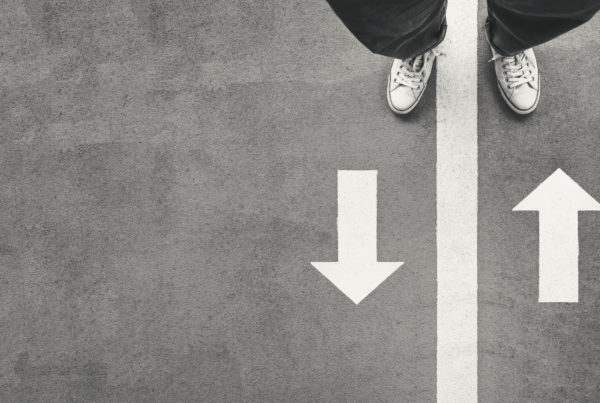The explosion of apps in the past 11 years has dramatically increased the number of user experiences and platforms we interact with in our daily lives, creating an overwhelming demand for UX talent. But though companies have a greater need for UX talent, many are struggling to hire the right people at the right times. This is largely because they don’t know what type of UX talent they need. Strategists, analysts, designers, researchers — with so many UX-related titles being used, we still see a lot of confusion about who does what.
Mismatched talent frustrates everyone involved. The individual isn’t utilizing his or her real strengths; the company wonders why it’s spinning its wheels; customers move on to whoever can provide an easier, more compelling user experience.
Solving this problem starts with breaking down the broad umbrella of “UX”, which is actually made up of several different areas of expertise. By understanding this diverse cast of characters, companies can pinpoint the talent they really need for the work at hand.
One Field, Many Specialties
UX job descriptions have significant overlaps, as these pieces can and should be deeply interconnected. Still, no matter the level of talent, it’s extremely rare for one person to truly excel at the entire spectrum of UX-related tasks. When our clients unbundle these roles, they quickly see improvements in product quality.
Knowledge is power when it comes to assembling your UX crew, so here’s a run-down of the 5 main types of UX pros you’ll come across in your search — plus insider tips from our talented UX Filterati.
1. UX Strategist
A strong collaborator who partners with product or program owners, and works closely with other UX specialists. Their deep expertise helps inform everything from initial problem-solving to final design.
Also called: UX Architect, UX Product Manager, Director of UX, UX Manager, Design Lead
What they do: This high-level professional’s deep expertise helps inform everything from initial problem-solving to research and design. A strong collaborator, he or she partners with product or program owners to make big UX decisions and works closely with other UX specialists throughout the process. A successful UX Strategist thinks in terms of measurable results and works to keep the entire project in alignment with the company’s business objectives.
“The UX Strategist is the air traffic controller for UX execution. He or she should be a deeply embedded partner with project or program ownership, helping guide high-level decisions.”
— Robert Lasker, Filterati
A UX Strategist may: Partner with project or program owners to establish overall strategy; Determine when and how to involve other UX specialists; Ensure alignment with business goals at every stage; Recommend priorities and approaches driven by the product lifecycle or roadmap; Analyze market and user research; Collaborate and educate across the organization to drive user-focused decisions.
When you need a UX Strategist: Bring on this senior talent at the start of the product development lifecycle. Match skill-to-task and task-to-cost by hammering out the most important problems and solutions at the top of the chain, far before the product moves into design and development.
2. UX Researcher
A “people person” who is genuinely curious about how others think, feel and live. They are highly analytical thinkers with a knack for identifying patterns and interpreting nuanced information.
Also called: Usability Researcher/ Specialist/ Analyst, User Researcher
What they do: A UX Researcher discovers and analyzes the demographics, behaviors, pain points and preferences of your target audience. UX Researchers are “people people” who are genuinely curious about how others think, feel and live. They’re not just empaths, though; they’re highly analytical thinkers with a knack for identifying patterns and interpreting nuanced information.
A UX Researcher’s work often involves: Identifying and recommending the most effective research methods for the project; Conducting a variety of research activities such as interviews, usability studies, ethnographic studies and A/B tests; Informing early and revised UX Design with relevant recommendations; Analyzing and reporting findings to others in the company.
“Recipe for successful research: Take one part radical empathy and one part scientific thinking. Mix thoroughly with a sample of users and allow to rise. Actionable insights will form on the inside. Carefully extract these and transfer to presentation plate. Serve portions appropriate to your audience with their favorite sauce.”
— Michael Perry, Senior Lead UX Researcher & Filterati
When you need a UX Researcher: The sooner the better! The more you know about your users, the less time, money and stress you’ll spend making tweaks down the road. Leverage UX research at multiple points in the product lifecycle to make sure the product is really answering your customers’ wants and needs.
3. UX Designer
Acting as the bridge between the conceptual and visual elements of UX, they touch multiple stages of the project and help maintain a constant focus on the end-user.
What they do: Guided by the UX strategy and research conducted earlier in the project, this person uses their expertise in user flows and information architecture to map out the product’s functionality. In a sense, UX Design is the bridge between the conceptual and visual elements of UX; it touches multiple stages of the project, helping maintain a constant focus on the end-user. Look for a candidate who can walk you through their process clearly and confidently — we’ve found this to be the single best indicator of a UX Designer who really “gets it.”
“As a UX Designer I advocate for users; as Susan Dray put it, ‘If the user can’t use it, it doesn’t work.’ A lot of people within organizations don’t stop to think about how their own discipline impacts UX. In a way, we’re all UX Designers.”
— Rick Hines, Filterati & UX Designer
UX Design includes the following outputs: Wireframes, information architecture, storyboards, sitemap, user flows, and scenario mapping.
When you need a UX Designer: This depends on the nature of the project and the skill set of the designer; companies frequently rely on this person for UX strategy and/or UI design as well. But typically, we advise clients to engage a UX Designer after the foundational problem analysis and user research, and before diving into the nitty-gritty of the user interface.
4. UI Designer
By artfully blending specific business requirements with more general UX flows, UI Designers create a visual language that is simple, powerful, and so familiar to users that it is essentially invisible.
Also called: UI Strategist/Engineer, Interaction Designer
What they do: A UI Designer takes the established UX framework and fleshes it out further, honing in on the interface-specific details of the product layout. He or she utilizes both creativity and technical prowess and is always on top of the latest developments in behavioral design and related technologies. This role is more tactical than strategic; by this stage in the product development lifecycle, specialists should only be making very small changes, if any.
A UI Designer’s responsibilities often include the following: Creating a cohesive style guide; Ensuring that a consistent visual language is applied across the product; Responsive design strategy for different devices; User input, navigation and help options; Consistent use and design of controls and interactive elements; Prototyping using HTML, CSS and JavaScript.
When you need a UI Designer: The UI Designer makes the UX Designer’s vision a reality, so this expertise is most valuable once you already have a strong UX framework in place.
“Part of the challenge of UI design is blending specific business requirements with more general UX flows to create a visual language that is simple, powerful, and familiar to the majority of users. The goal is to design a UI that the user doesn’t even notice; it should never get in the way of the user accomplishing his or her goals simply and efficiently.”
— CP Waite, Filterati & UX/UI Designer
5. Visual Designer
A visual guru who will make your product as consistently beautiful as it is smart.
Also called: Web Designer, Graphic Designer, UI/UX Designer
What they do: This role is what often comes to mind when people think of a designer; and indeed, visual elements like colors, images, and typography are likely to be the features users consciously notice about a product. But Visual Design is the cherry on top of (what should be) an in-depth process of UX planning. To make sure your product’s look reflects your UX vision, look for a Visual Designer whose creative skills are bolstered by a strong grasp of UX methodology, an understanding of your target audience, and the ability to work closely with the other specialists involved in the project.
A Visual Designer’s work includes these elements: Color, typography, style documentation (style guides, templates), page layout, icons, and images.
When you need a Visual Designer: Visual Design should be the final piece of the puzzle; engage this specialist when you already have a comprehensive, well-documented UX and UI foundation in place — and are ready to make your product as beautiful as it is smart.
“In addition to creating quality designs from scratch — using hierarchy, color, composition, typography, and so on — a good visual designer can also work within an existing design framework. The nuance of this role lies in knowing how to use established design patterns and branded elements, and when and how to extend and further define them.”
— Joel Shoop, Filterati & UX/Visual Designer
The Takeaway
In a field that requires so much specialization, throwing any type of UX talent at the problem isn’t likely to get you far. That’s why companies should evaluate their UX strategies on a regular basis — and shouldn’t settle for anything other than the precise skill sets they need. In many cases, unbundling these roles and focusing on thoughtful skill-to-task matches is the key to making your UX process sing.
Need more help determining what kind of UX help you need to round out your team? Talk to us so we can help you unpack your UX needs.
*Edited from a post originally published on 10/03/2017






